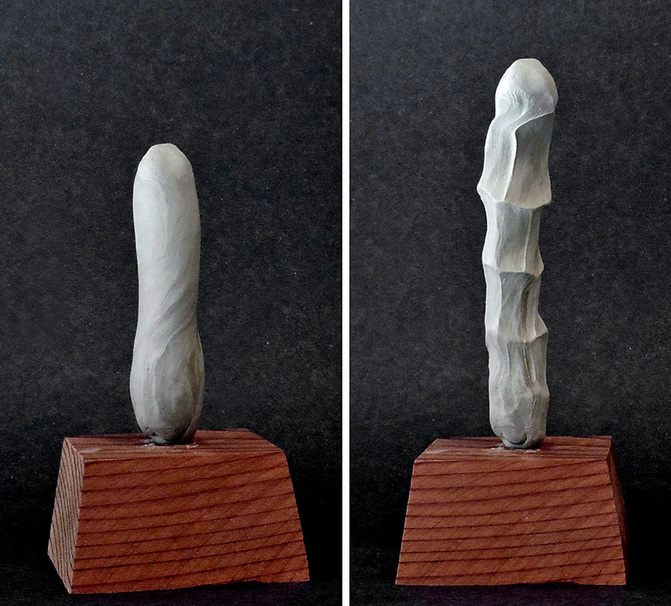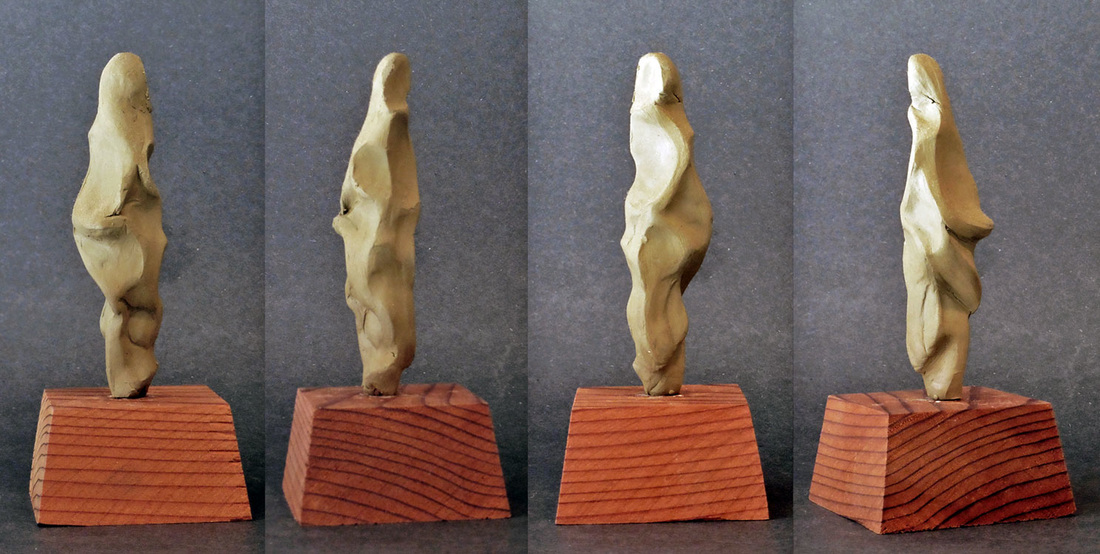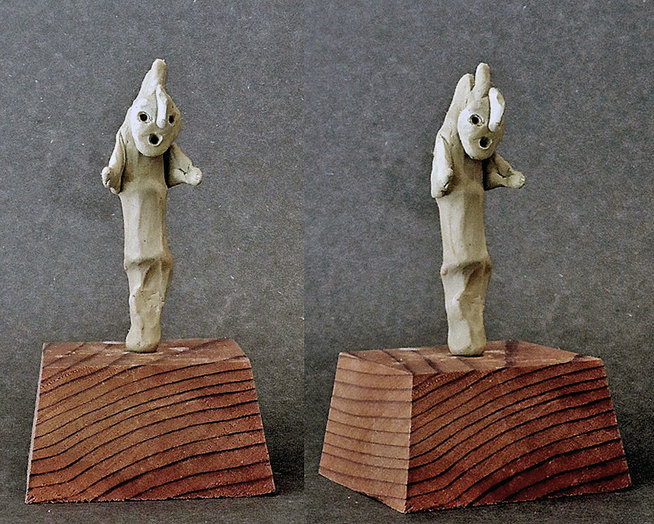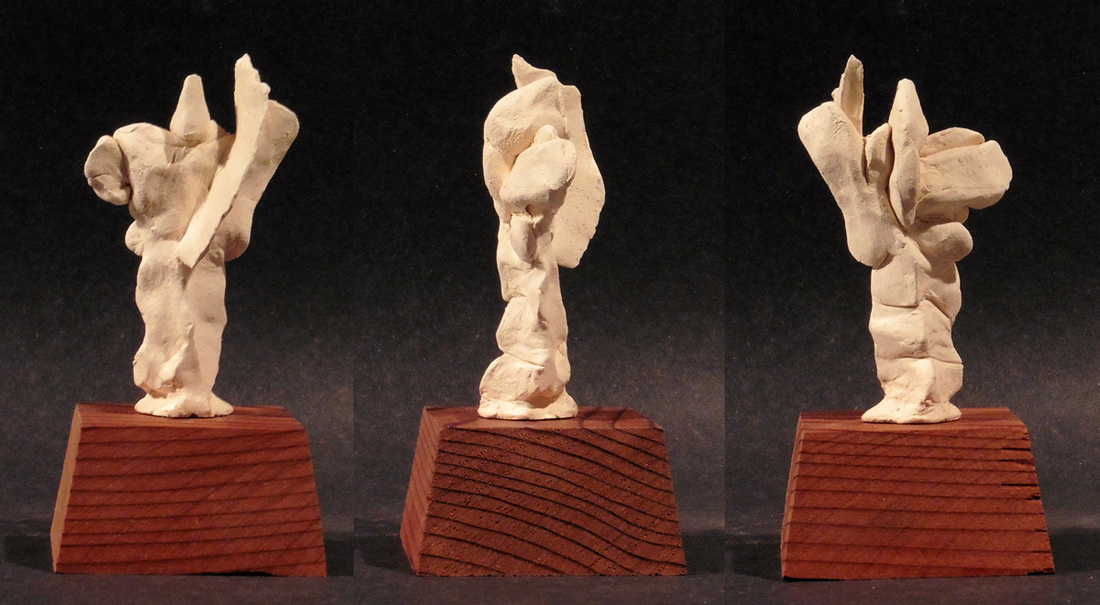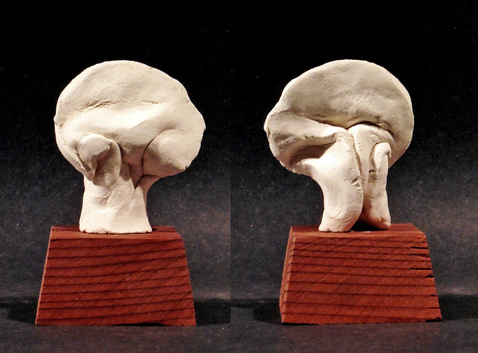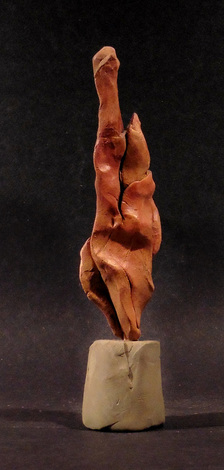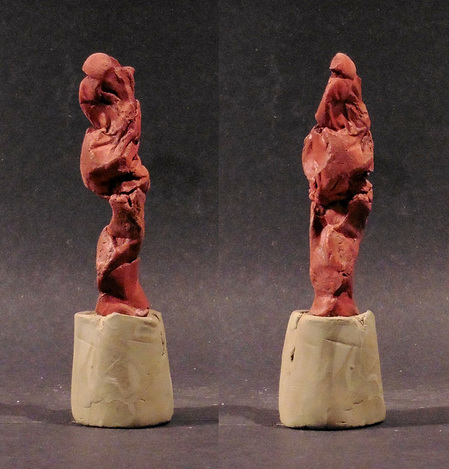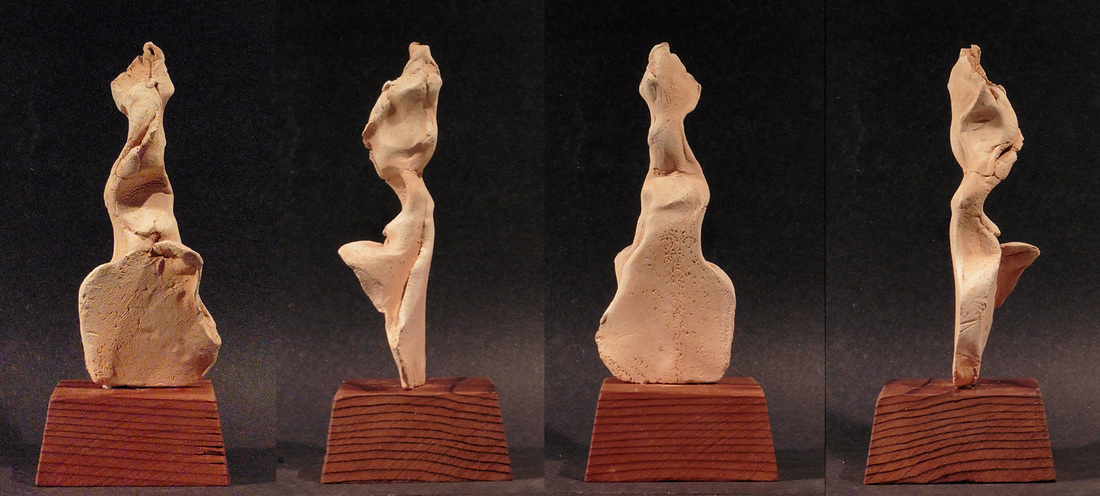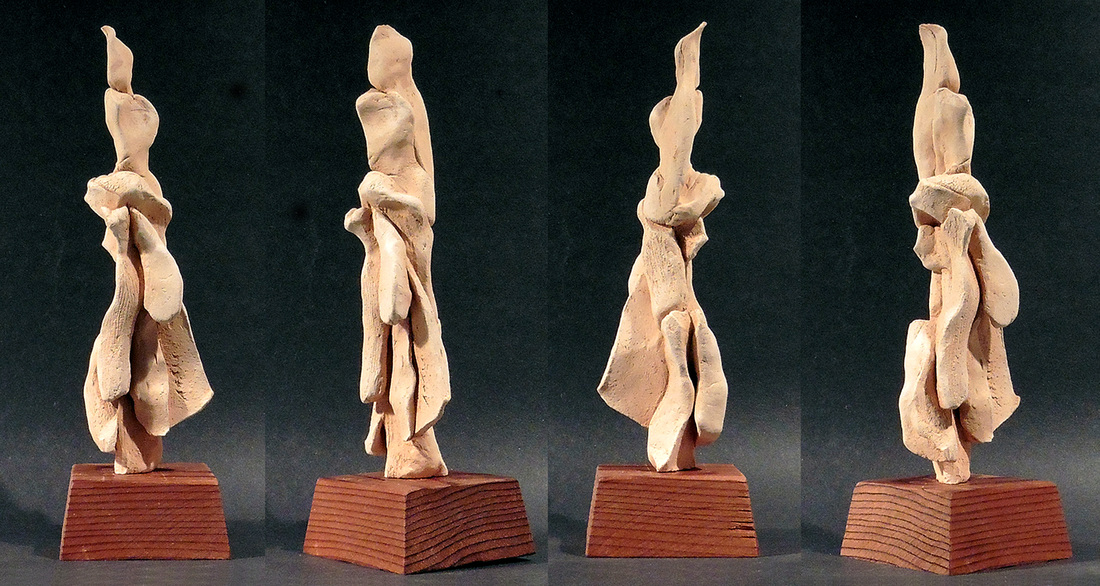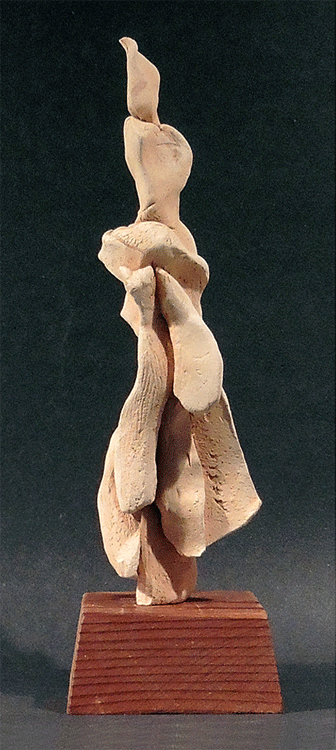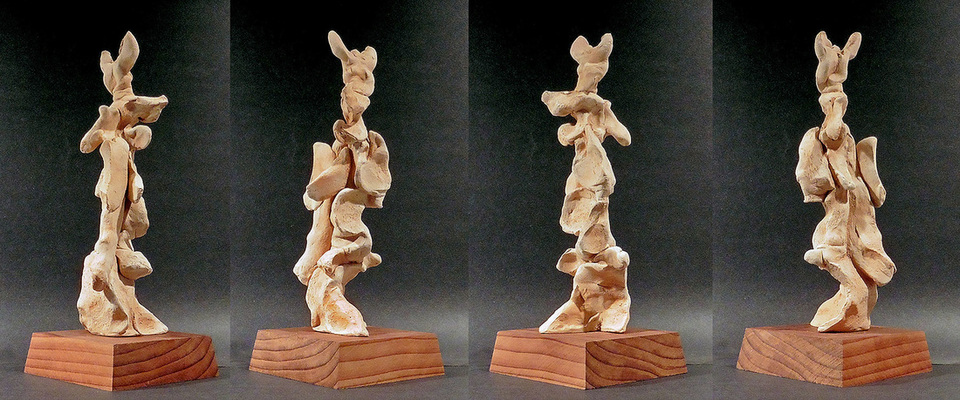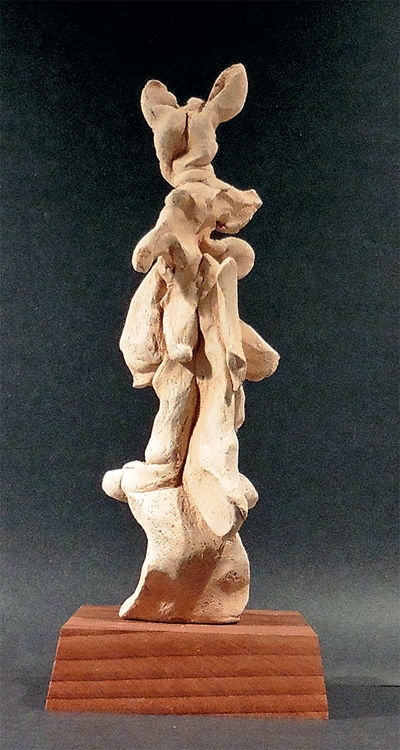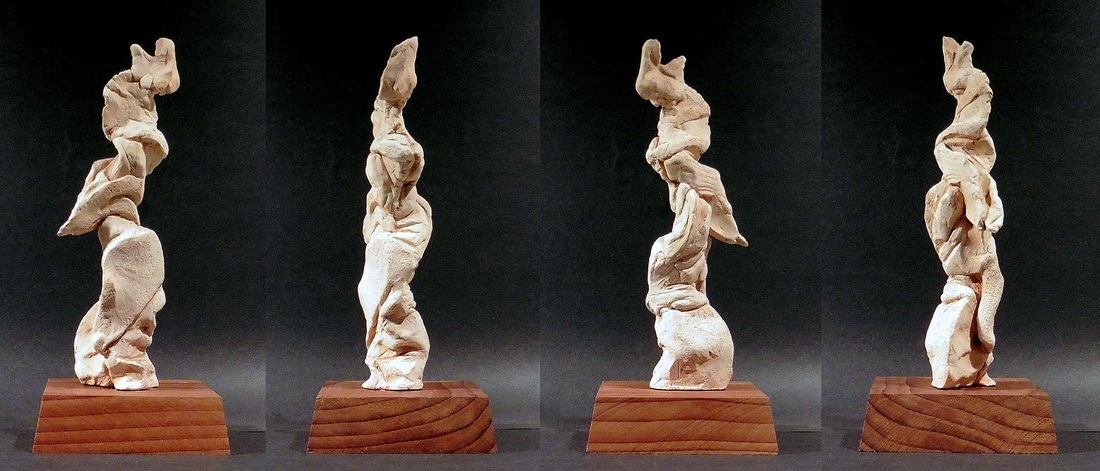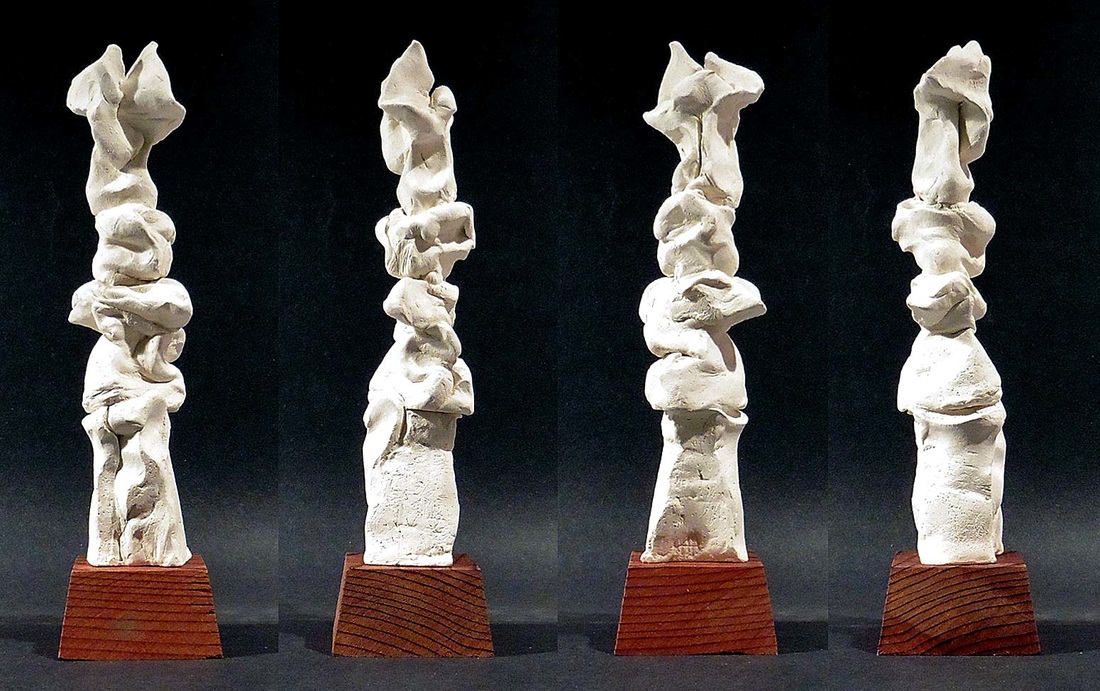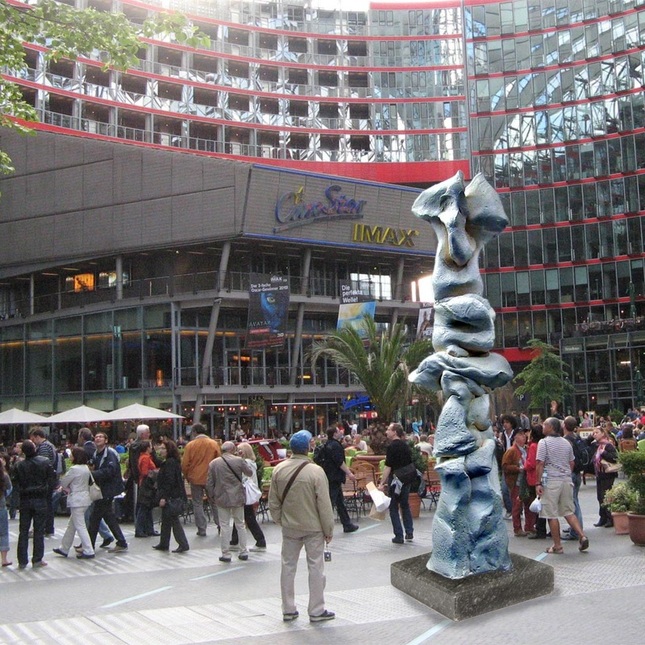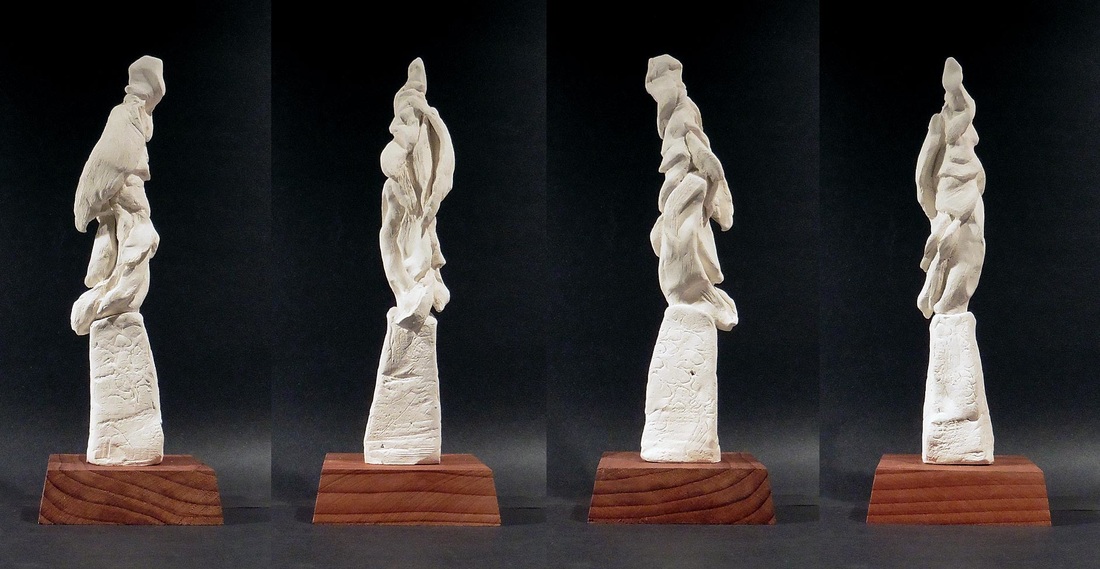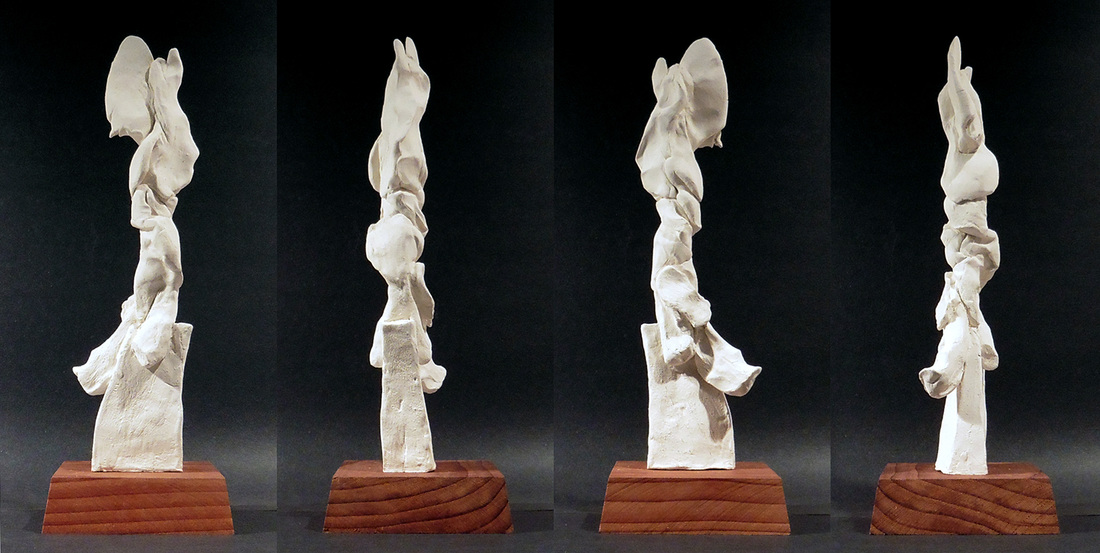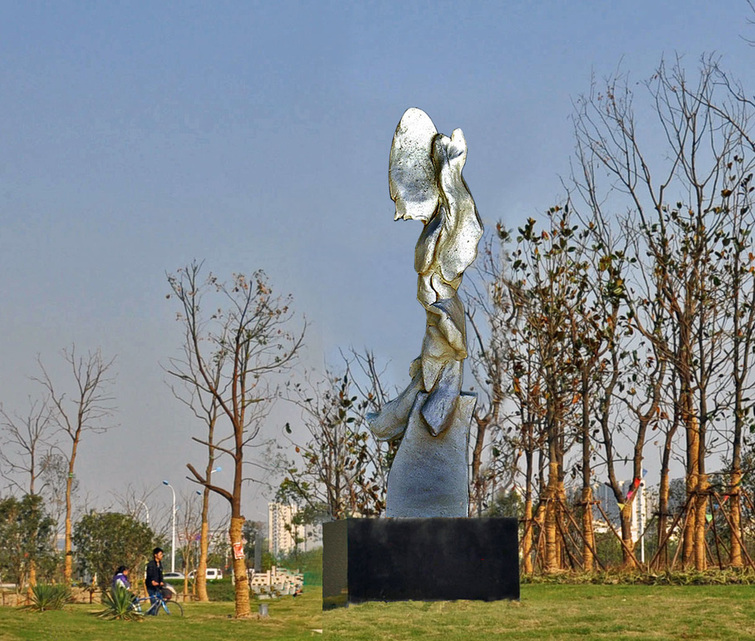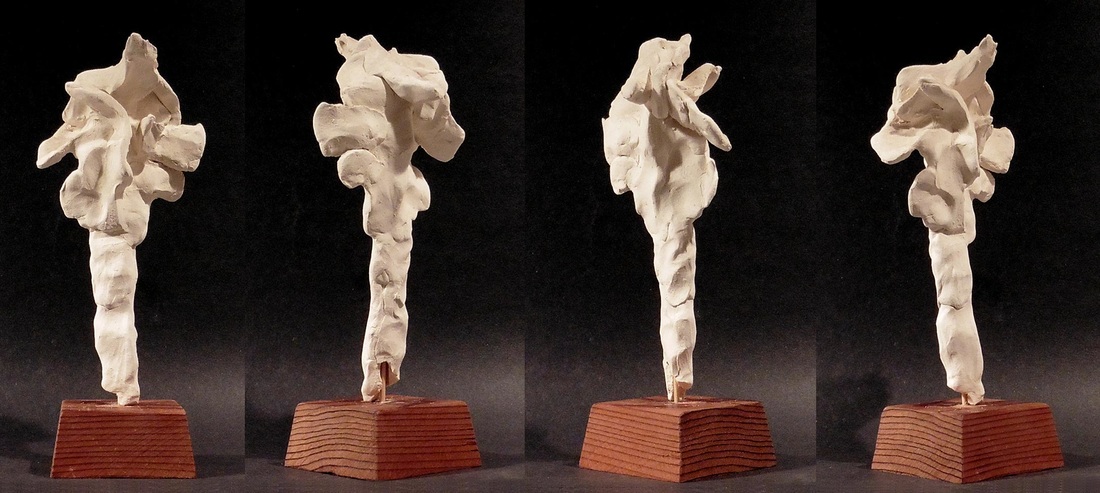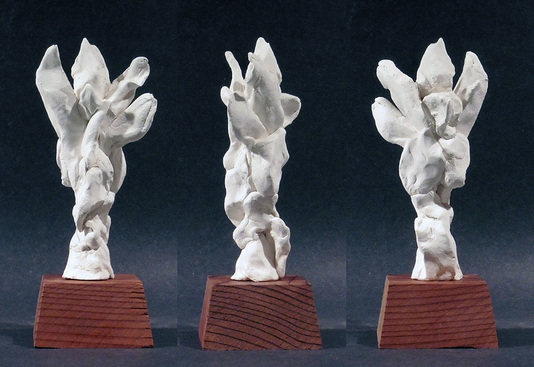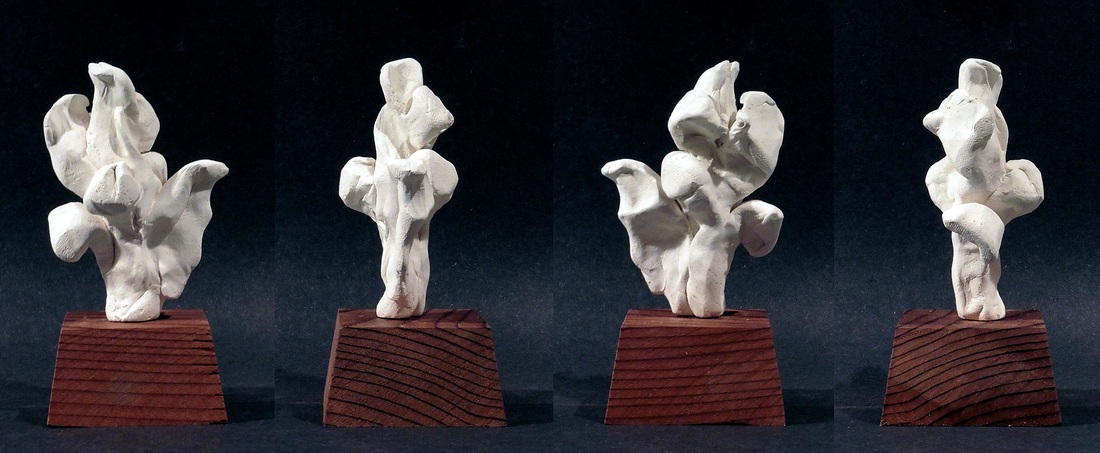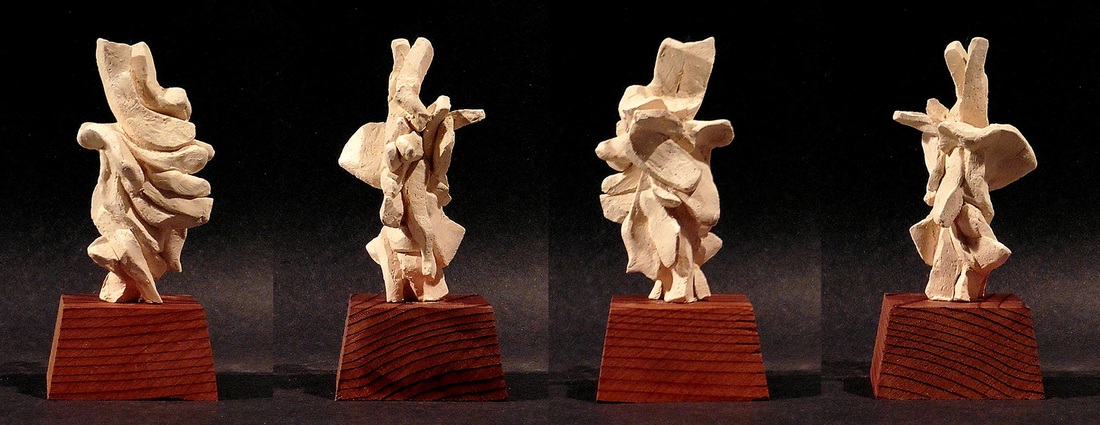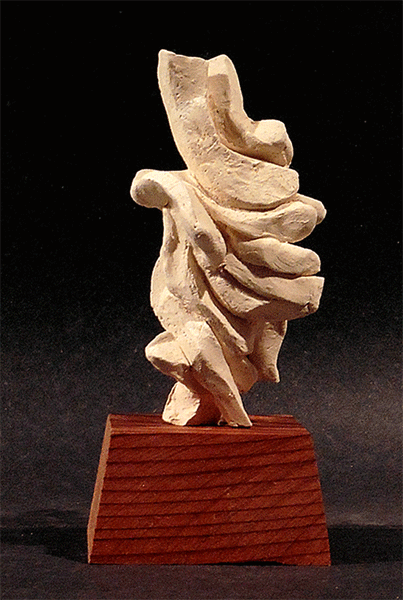COLUMNAR FIGURES IN CLAY 2003
While working on the cast and carved plaster columns of the previous section, I also made a series of columns in clay, using an additive process. The clay columns had softer, rounder, more organic shapes than the plaster columns, which were mostly angular in their surface topography.
A BIT ABOUT CLAY
In many creation myths the first humans were made of clay, that wonderful substance of wet fine-grained earth readily formed by hands into objects small and large, for need and for pleasure. Clay is an amorphous material from which one may beget solid shapes, the kind of transformation beloved by children, potters, and sculptors.
An example: Roll out a lump of clay to make a cylinder. Hold this in your fist, and squeeze it. Turn it a bit and squeeze it again. Remove it from your fist and stand it up: Voila! A metamorphosis. The negative spaces between the fingers become positive ridges; the unpressed end becomes the head of a ribbed column, the column becomes a figure, a being. Or perhaps a seed or a chrysalis, which may become a kind of flora or fauna. Indeed I find in retrospect that my columnar figures often suggest creatures or plants, and sometimes both.
In many creation myths the first humans were made of clay, that wonderful substance of wet fine-grained earth readily formed by hands into objects small and large, for need and for pleasure. Clay is an amorphous material from which one may beget solid shapes, the kind of transformation beloved by children, potters, and sculptors.
An example: Roll out a lump of clay to make a cylinder. Hold this in your fist, and squeeze it. Turn it a bit and squeeze it again. Remove it from your fist and stand it up: Voila! A metamorphosis. The negative spaces between the fingers become positive ridges; the unpressed end becomes the head of a ribbed column, the column becomes a figure, a being. Or perhaps a seed or a chrysalis, which may become a kind of flora or fauna. Indeed I find in retrospect that my columnar figures often suggest creatures or plants, and sometimes both.
Figure 1 4" and 5" high
One piece of plasticine in two phases.
I rolled out the clay to form the first shape, then squeezed that one in my fist to form the second.
One piece of plasticine in two phases.
I rolled out the clay to form the first shape, then squeezed that one in my fist to form the second.
From such a simple gesture, many years ago, I built a coterie of columnar beings in clay. Improvisation was the process, pressing and adding clay was the method. The results were unexpected, unplanned, and often full of energy and rhythm, with the vertical structure providing coherence and cohesion.
Below is a series of these clay pieces of different, though mostly small, sizes.
Below is a series of these clay pieces of different, though mostly small, sizes.
Figure 2 4 ¾” high (4 views)
One of my first plasticine figures which has somehow survived several decades.
Very much a cross between figure and plant.
One of my first plasticine figures which has somehow survived several decades.
Very much a cross between figure and plant.
From studies for my Chamber Players of 2003.
Figure 3 3 ½” high (2 views)
A simple fist-squeezed cylinder with a mask-like face and a couple of arms.
A simple fist-squeezed cylinder with a mask-like face and a couple of arms.
Figure 4 4 ¼” high (3 views)
An additive piece that came to suggest a standing warrior.
An additive piece that came to suggest a standing warrior.
Figure 5 3 ¼” high (2 views)
A small squeezed shape suggesting a mushroom or a head.
A small squeezed shape suggesting a mushroom or a head.
Figure 6 6 ½” high
Figure 7 4 ½” high (2 views)
The above two figures were made in plastic self-hardening clay, mostly shaped by pressing.
The above two figures were made in plastic self-hardening clay, mostly shaped by pressing.
Figure 8 6" high (4 views)
A pressed shaped figure, combining flat and twisted areas. Quite different in "front" and "side" views.
A pressed shaped figure, combining flat and twisted areas. Quite different in "front" and "side" views.
Figure 9 9" high (4 views)
In this and in the following figures I moved from pressing and squeezing – a version of modeling – to building vertical figures by adding and combining shapes. The structure was supported by a vertical rod acting as a spine, which I removed as the clay dried. The pieces were bisque fired.
Figure 9 rotating clockwise
Figure 10 11" high (4 views)
Figure 10 rotating clockwise
Figure 11 10" high (4 views)
Figure 12 9 ½” high (4 views)
This piece stays close to its vertical thrust and suggests a kind of totem pole, or a plant opening a bud at the top. Made from different clay than the terra cotta ones shown above, it fired to an almost white color.
Figure 12 imagined as enlarged and cast in metal for a public space.
Figure 13 12" high (4 views)
Figure 14 12 ½” high (4 views)
I built Figures 13 and 14 on clay pedestals, suggesting classical heroic sculptures. Although completely improvised in their construction, they suggest winged creatures perched upon their supporting pedestals.
Figure 14 imagined as enlarged and cast in metal to monumental size.
Figure 15 6 ½ ” high (4 views)
This one not only has no pedestal, it has no footing to stand on. It needs a rod support, visible at the base. The piece rises from a stem and expands at the top like a plant, or a pirouetting dancer with a flared costume.
Figure 16 6" high (3 views)
Figure 17 4 ¼" high (4 views)
Figures 16 and 17 are no longer columnar, although they rise from the ground in a vertical thrust. These are more flora than fauna, growing out from a stem. In Figure 17, in the first and third views above, it seems as if we are looking at a plant, but in the second and fourth views it may be a standing figure.
Figure 18 4 ½ " high (4 views)
There is something of a dancer in this figure, a dancer spinning about its central axis. The first view is so different from the others shown that it's hard to conjure it from the other views.
Figure 18 rotating clockwise
